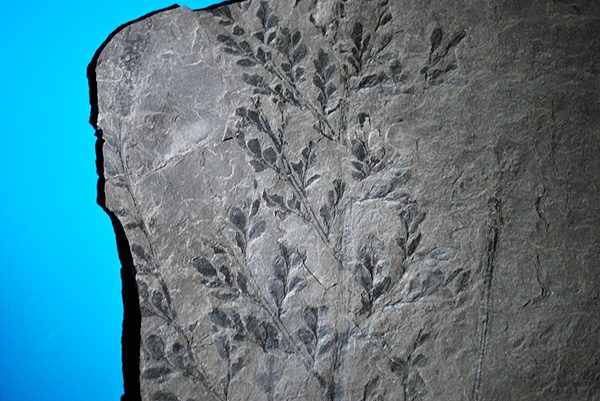Plant life began its invasion of land many millions of years before the arrival of invertebrates or tetrapods. By Early Carboniferous times, most of the major plant groups had evolved and already colonized the key habitats on land. The first true forest ecosystems date from this time.
These early forests were dominated by early lycopsids, such as Lepidodendropsis – a primitive relative of the better-known Lepidodendron. These trees are easily recognized by their diamond-scaled bark appearance. Other trees included Sigillaria, with a pattern of fine longitudinal lines on its bark. Another known only from rare fragments that resemble burnt wood are tentatively identified as the early conifer Dadoxylon.

The Early Carboniferous forests were dominated by Lepidodendropsis, a primitive relative of the better-known Lepidodendron.
Smaller plants include the reed-like Cordaites, with its wide, strap-like leaves, and Archaeocalamites, with fine leaves that radiated from the central stem in asterix-like (star-like) patterns.

This is the only known specimen of Genselina from Blue Beach, discovered in 2002.
Other parts of these same plants are often found separated from their stems, for example – fossilized roots and flower-like tips of the branches. Because these cannot always be assigned to any particular species with confidence, paleobotanists long ago decided to give these their own separate names. The rootlets are collectively known as Stigmaria, while flower-like portions are known as Strobila. Megaspores constitute another form, and at up to 2 mm in diameter, are far larger than spores of today. The fossil record of these spores suggest that dozens of plant species remain undiscovered.